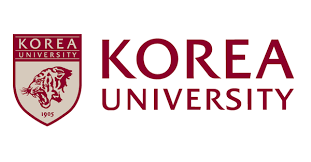Korea University Researchers Awaken Frozen Cells By DNA Nanotechnology
The research group led by Professor Ahn Dong June of the Department of Chemical and Biological Engineering, College of Engineering (also affiliated with the KU-KIST Graduate School of Converging Science and Technology) and Professor Kim Do-Nyun of the Department of Mechanical Engineering at Seoul National University developed a biocompatible DNA nanomaterial that can provide a recovery performance higher than that of chemical cryoprotective agents in cryopreservation, even at a much lower concentration.
The results of the study were published in October 2022 in Science Advances (IF=14.972), which is a renowned journal in the field of convergence science and technology. The research group has secured a patent portfolio including many Korean and international patents.
With the recent developments in medical technologies, including the cryopreservation of stem cells, cord blood and sperm and egg cells and the invention of various cell therapies, there is an increasing need for stable cryopreservation methods for storing high value-added biological samples and products. The need is represented by the growth of the cold chain industry, and the global cell therapy market is expected to grow to 442 billion USD in 2023. In addition, the cell banking market is also growing continuously.
* Cell therapies: Biological pharmaceuticals used for the treatment, diagnosis and prevention of diseases through a series of actions changing the biological characteristics of cells by physical, chemical and biological methods, including the culture, growth and selection of living cells (auto-cellular, iso-cellular and hetero-cellular) in vitro to recover the functions of cells and tissues.
However, conventional chemical cryoprotective agents, such as dimethyl sulfoxide (DMSO), have cytotoxicity, and the use of high concentrations of chemical cryoprotective agents to lower the melting point can damage biological samples, and may cause adverse effects when thawed cells are infused into the patient. Therefore, chemical cryoprotective agents have the limitation that the exposure time to them after thawing should be minimized and that the biological samples should not be used immediately after thawing. In addition, high value-added biological samples, which may be more vulnerable to damage during the thawing process, require cryoprotective agents customized to the individual samples.
The research group combined protein sequences that have a cryoprotective function with an origami structure prepared by DNA nanotechnology and arranged the sequences to develop a cryoprotective material exhibiting a cell recovery rate that is about 50% higher than that of the conventional chemical cryoprotective agent (DMSO) at an extremely low concentration (1/3,500) without cytotoxicity. The newly developed cryoprotective material has high development potential because the types and arrangements of the cryoprotective functional groups may be diversified using the complementary bonding of DNA molecules.
The present study is the first case where the DNA origami structure has been applied to the cryopreservation of cells, and also the first case where deep learning has been introduced to analyze the performance of a cryoprotective material. The material developed in the present study exhibited outstanding advantage over the chemical cryoprotective agents, particularly in long-term cryopreservation. The cryopreservation mechanism of the DNA origami nano-patch found in the present study may be continuously applied to varied biological samples.
The results of the present study are considered to represent a source technology for DNA-based cryoprotective materials. A patent portfolio is now being established with two Korean patents and one international patent already registered, two international patents that have been applied for (US and EU), and four further international patents that are being prepared for application (US, Japan, EU and China). The present study was supported by the Future Materials Discovery Program through the National Research Foundation of Korea.

